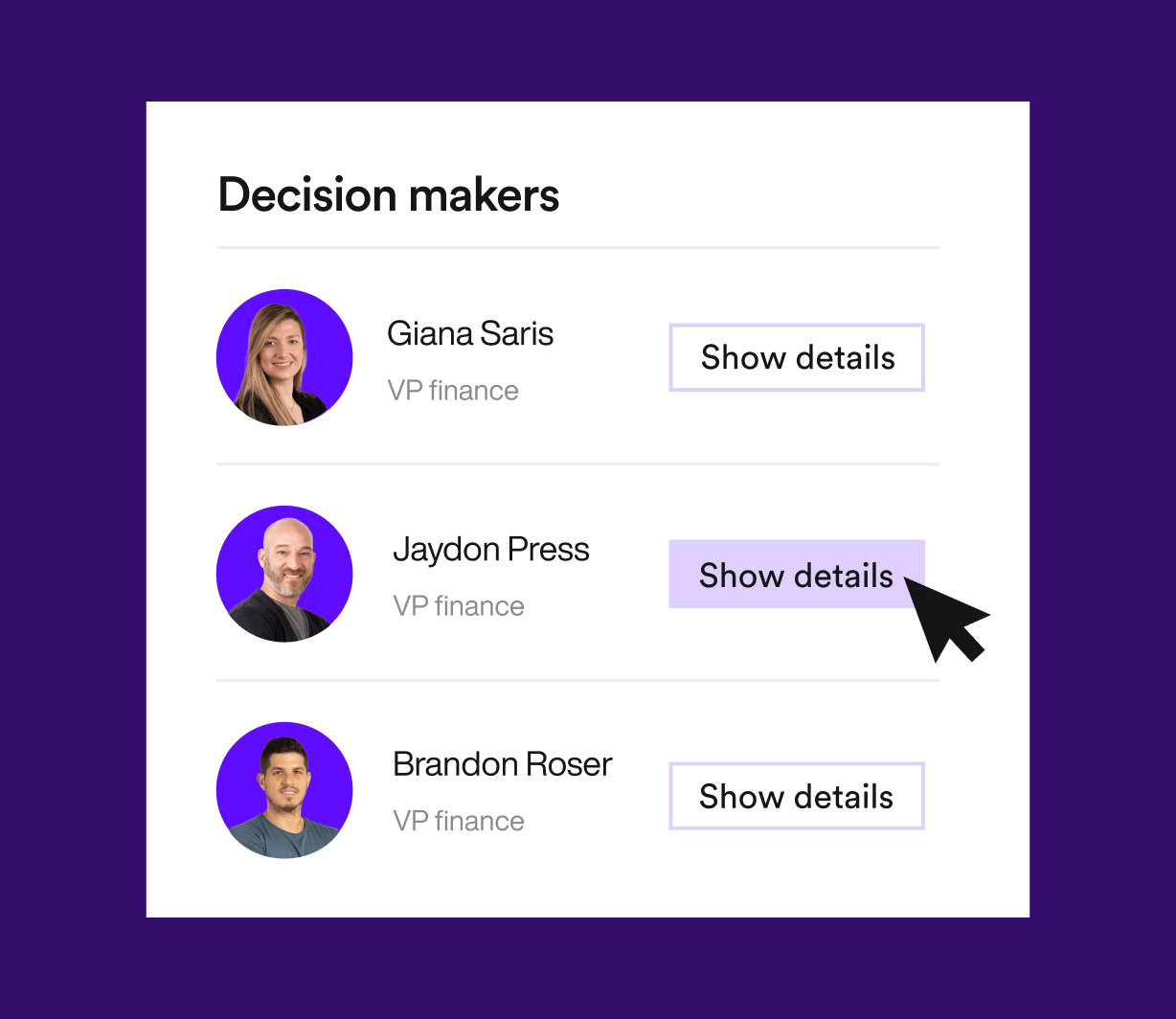Do you ever feel like trying to build with a rapport with a prospect over Zoom is like, well, talking to a blank screen? Virtual selling can make it tough to create that human-to-human bond that’s so important for closing deals. But we’re in the virtual selling era now – in fact, we’ve been in […]
Do you ever feel like trying to build with a rapport with a prospect over Zoom is like, well, talking to a blank screen? Virtual selling can make it tough to create that human-to-human bond that’s so important for closing deals.
But we’re in the virtual selling era now – in fact, we’ve been in the virtual selling era for a while now– and we’re not going back. Sales leaders say digital channels are twice as important now as they used to be, and sellers who provide an outstanding digital experience for their buyers are twice as likely to be chosen as a primary service provider. So you’ve got to get it right.
Thankfully, you can tap into some principles from psychology to help make up the difference and get maximum impact.
Here are seven psychology-backed tips to make your next virtual meeting a success:
1. Pretend it’s an in-person meeting
Your mind is a powerful thing. Your imagination can actually change your perception of reality. So while of course you’ll know you’re not in the office with your prospect, treat it as if you’re actually meeting face-to-face as much as possible. That way, you can trick your brain into feeling more present and engaged and build a stronger connection.
Part of giving your Zoom call that “in-person meeting” feeling will involve removing as many reminders as possible that it’s virtual. Make sure to resolve any potential technical issues ahead of time so you don’t get distracted by them and make sure that you know how to quickly resolve common problems that may pop up.
Another important point is to conduct these meetings with cameras on as much as possible. Facial expressions and body language are powerful communication tools that you’ll miss out on with cameras off. If you can’t see the person on the other end of the call, it will be that much harder to build rapport with them. Of course, you’ll still come across some prospects who aren’t willing to turn their camera on, but it doesn’t hurt to ask.
2. Set the scene for your personality
When you meet someone in their office, you see glimpses of they are – family photos on the desk, a quippy coffee mug, or a clear favorite color. This isn’t something you have to lose when meeting someone virtually.
When prospective clients join a video call, they’re getting a little peek into your world. Use this to your advantage by strategically placing some personal items in the background to reveal a bit about your personality and interests. According to the liking principle, we’re more likely to be convinced of someone’s ideas or suggestions when we find we have common ground like similar interests, values, or hobbies.
So instead of blurring your background, use it strategically. Let them see the photo of your dog or that poster from your favorite band’s recent tour. It’s almost like another form of nonverbal communication that can help you connect with your prospects.
3. Ditch distractions
Multitasking is a myth. When you think you’re multitasking, what you’re really doing is shifting your attention rapidly back and forth between tasks. Attempting it during a call will only make you look scattered and disengaged during a virtual meeting, and you might miss some important parts of the conversation.
So mute your Slack, close down unnecessary browser tabs, and silence any apps or notifications that could pull your attention away. You might even want to hide your phone in another room. Research shows that even just looking at your phone can be a drain on your cognitive abilities (we know, that one’s hard to hear).
Want to go fully distraction-free? Why not hide your view of yourself in the meeting, too? It’s hard not to look at yourself during a Zoom meeting – we all do it. But this goes back to tip #1 of treating this like an in-person meeting. You don’t conduct most of your meetings in front of a mirror, do you?
Let your prospect have your full, undivided focus, and you’ll build a better connection.
4. Remember emotions are contagious
Emotions are contagious, so make sure the ones you’re broadcasting are good. This is a good opportunity to lead the conversation not just on an intellectual level, but an emotional one too. Show enthusiasm in the right place (like after you demonstrate a cool feature and talk about everything they can accomplish with your tool), demonstrate concern when necessary, and generally try to match your visible feelings to what’s being discussed.
Displaying genuine emotions and expressions on camera during Zoom calls activates mirror neurons in your prospect’s brain, causing them to subconsciously mimic (and start to actually experience) the same emotions as you. It’s an incredibly effective way to build rapport. And as the legendary Zig Ziglar said, “People don’t buy for logical reasons. They buy for emotional reasons.”
5. Listen like a pro
We’ve all zoned out during a rambling conference call before. To forge a real connection, you need to go beyond just hearing words and strive for full, empathetic listening.
According to Stephen Covey, there are five types of listening. They range from type one at the lowest (ignoring) to stage five at the highest (empathetic listening). Stage five listening means being fully present, receptive, and curious about the complete message being conveyed – not just the literal words, but the speaker’s tone, body language, and unspoken feelings too. With stage five listening, even if the speakers struggles to find the right words, you’re listening under and above and in between – you’re still getting the message because you’re paying very close attention.
Prospects can tell when you’re genuinely listening this intently, and it creates an environment of mutual understanding.
6. Use reciprocity
According to persuasion and marketing psychology expert Robert Cialdini, humans have a deep-seated tendency to want to give back when someone does something for us. So pay it forward during your virtual meeting by offering up some relevant, valuable information or advice – without expecting anything immediately in return. It could be a quick tip, a suggestion for streamlining their operations, or anything else that would legitimately help their business. The most important part is to throw it out there without asking for anything in return.
Doing this gets the reciprocity principle going, making your prospect more inclined to give back to you eventually (which in this case means doing business together).
7. Finish strong with the peak-end rule
How do you want your prospect to remember your interaction? The peak-end rule, based on work by Dr. Daniel Kahneman and Barbara Fredrickson, states that we judge experiences based on the “peak” (the most intense moment) and the end, rather than the experience as a whole. That means it’s important to finish strong.
Ending on a high note can be tough on a Zoom call. Someone might be rushing to the next meeting, or everyone maybe the meeting host boots everyone out early before proper goodbyes have been said. The peak-end rule means that all of your meetings – even virtual ones – need to end on an upbeat note to leave a good lasting impression.
Make sure that your virtual meetings don’t end on a blah note. Finish them up with meaningful interactions, a silly joke, a unique way to summarize the meeting, exciting action items that show progress on the goal – whatever increases positive emotions for your prospect at the end. The key is to leave them with one final, positive impression that’ll stick in their mind long after your face disappears from their computer screen.
Conclusion
Just like being a great sales rep includes a good balance of art and strategy, making valuable connections via virtual calls is its own unique challenge. It might be tricky to form a meaningful interactions with an extra layer of distance, but if you use these tips from psychology, you can make the process a little smoother. Of course, these tactics are just suggestions which you should take into consideration alongside norms in your prospect’s industry and culture.
And while we’re talking about connections, you’ll need to nail down a way to get in touch with those potential customers in the first place. For that, try using Lusha. You can start for free!



